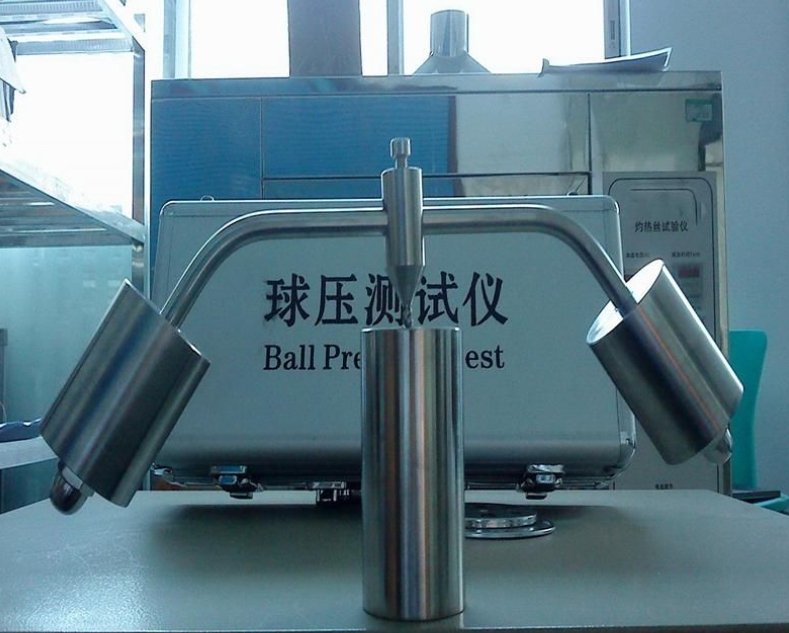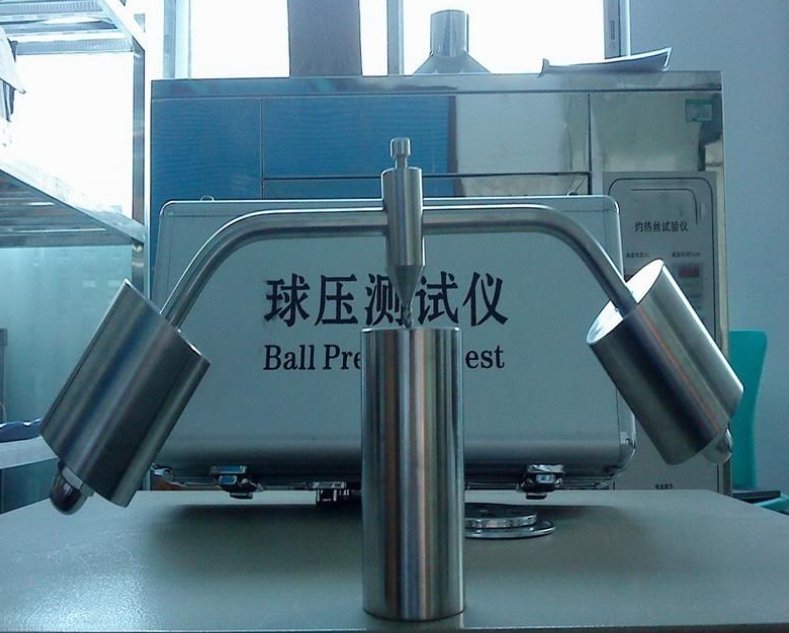Ball-Pressure Test for Power Strips
The ball-pressure test is a crucial method used to evaluate the heat resistance of insulating materials in electrical devices, including power strips. This test ensures that materials used in power strip construction can withstand high temperatures without deforming, compromising safety, or affecting performance. It is a standard requirement for products seeking certification under CE and other international safety standards.
Purpose of the Ball-Pressure Test
The ball-pressure test is designed to simulate the stresses that insulating materials may be subjected to when exposed to elevated temperatures. The test determines whether these materials can maintain their structural integrity and continue to protect the electrical components within a power strip under extreme conditions.
The test is particularly relevant for ensuring that the power strip:
- Can endure high operational temperatures.
- Does not melt or warp under thermal stress.
- Continues to provide insulation and protection even in adverse conditions.
Test Procedure
The ball-pressure test is conducted according to the standards outlined in IEC 60695-10-2 and IEC 60884-1, which are part of the broader International Electrotechnical Commission (IEC) standards.
Key Steps in the Procedure:
- Preparation:
- A 2.5 mm diameter steel ball is used to apply pressure to the insulating material of the power strip. The material being tested must be positioned horizontally on a flat surface.
- Temperature Exposure:
- The power strip or insulating material is preconditioned in an oven at a temperature of 125°C (± 2°C) for a specified period, typically 1 hour.
- The ball is pressed against the surface of the material with a 20N force (about 2kg) during this period.
- Cooling Phase:
- After the heating period, the specimen is cooled in a controlled environment (often at 20°C to 25°C) for at least 10 minutes.
- Measurement:
- The depth of the indentation left by the ball is measured. The insulating material must not exhibit a deformation greater than 2 mm. This ensures that the material retains its mechanical and protective properties under thermal stress.
Conditions:
- The test is typically conducted on the housing material or other insulating parts of the power strip.
- 125°C is a standard test temperature, but higher temperatures may be used for products intended for more demanding environments.
Importance of the Ball-Pressure Test for Power Strips
The ball-pressure test is essential for verifying the quality and safety of power strips, especially in environments where the device may be exposed to higher temperatures. The test ensures:
- Thermal Safety: Power strips often operate in conditions where heat is generated by multiple connected devices. This test helps ensure that the material won’t degrade or melt, which could otherwise lead to safety hazards such as electrical shorts or fires.
- Compliance with Standards: Passing the ball-pressure test is a prerequisite for obtaining CE certification and compliance with other international safety standards (like IEC and UL). This compliance is mandatory for products to be sold in the European Economic Area (EEA).
- Durability: The test confirms that the materials used in power strips can endure long-term exposure to heat without losing functionality or posing safety risks to users.
Materials Tested
The insulating materials commonly tested in the ball-pressure test include:
- Polypropylene (PP): Often used for lower-cost, general-use power strips, but it requires careful testing for higher temperature resistance.
- Polycarbonate (PC): A more durable and heat-resistant material, commonly used for high-end power strips, and typically performs well under ball-pressure testing conditions.
- PVC (Polyvinyl Chloride): Frequently used in the outer sheathing of cables and power strip components due to its moderate heat resistance.
Compliance with CE Standards
The CE marking indicates that a power strip has passed the necessary safety tests, including the ball-pressure test, and complies with the relevant European Union directives, such as the Low Voltage Directive (2014/35/EU). Products that pass this test demonstrate their ability to withstand high temperatures and ensure user safety, making them suitable for sale in European markets.
Real-World Example: Ball-Pressure Test Setup
Below is a real-world example of the ball-pressure test setup used to assess power strip insulation materials:

This setup shows the steel ball applying pressure to the material under controlled conditions, simulating the thermal stress power strips might endure during operation.
Conclusion
The ball-pressure test is an essential safety measure to assess the ability of a power strip’s insulating materials to resist deformation at high temperatures. By simulating thermal stress, this test helps manufacturers ensure that their products maintain structural integrity and user safety, even in challenging environments. Power strips that successfully pass the ball-pressure test meet international standards, providing users with reliable and safe products.







